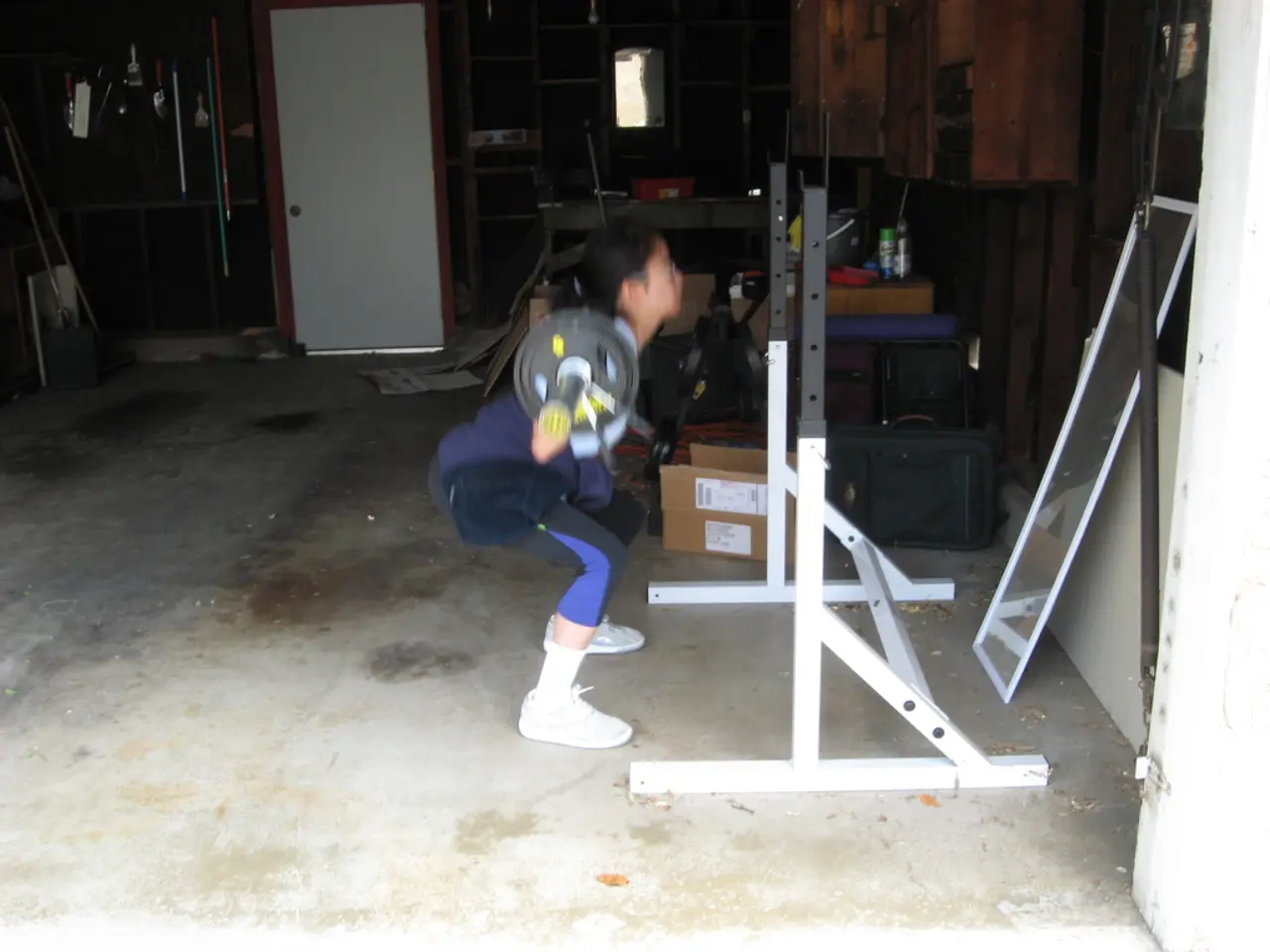Enhanced Safety: Top-tier Strength Training Routines for Long-distance Runners
Running is a popular and effective form of exercise, but it can also lead to injuries if the right precautions are not taken. Strengthening exercises are crucial for runners to enhance their performance, prevent injuries, and improve single-leg strength and stability. Here's a list of recommended exercises:
**Exercises to Improve Performance and Prevent Injuries**
1. **Glute Bridges**: This simple yet effective exercise helps build glute strength and stability, essential for efficient running form. 2. **Hip Abductions**: Strengthening the hip muscles is crucial for maintaining proper running alignment and reducing the risk of injuries. 3. **Clamshell Exercise**: Targeting the gluteus medius, this exercise helps stabilize the hip during running. 4. **Plank**: Improving core strength is vital for maintaining good posture and running efficiency. 5. **Calf Raises**: Strengthening the calf muscles reduces strain on the Achilles tendon and prevents injuries.
## **Single-Leg Exercises for Stability**
1. **Single-Leg Squats**: Developing balance and strength in one leg, this exercise mirrors the stance phase of running. 2. **Single-Leg Deadlifts**: Enhancing balance while strengthening the glutes and hamstrings. 3. **Single-Leg Lunges**: Improving stability and strength in the legs, hip, and core muscles. 4. **Pistol Squats**: These require balance and strength, making them ideal for runners needing to improve single-leg stability. 5. **Single-Leg Hops**: Increasing power and stability by activating the same muscles used in running.
## **Combining Strength Training with Running**
For an effective combination, runners should focus on full-body exercises rather than isolating specific muscle groups. This can be achieved using tools like dumbbells, kettlebells, or resistance bands. A general rule of thumb is to perform 2 to 3 strength sessions per week, adjusting the frequency based on your current training phase.
1. **Kettlebell Swings**: This exercise improves hip extension, essential for efficient running. 2. **Advanced Glute Bridge Exercises**: These can involve performing the exercise on a single leg for increased difficulty. 3. **Russian Twists**: This exercise strengthens the core and improves rotational stability, essential for efficient running.
It's important to note that each exercise should be done for 2-3 sets of 10-15 reps or 30-60 seconds hold. A single step while running can place up to 600 kilograms of load on one leg, so strengthening exercises can significantly reduce the risk of injuries.
Strength training is beneficial for runners as it protects against injuries, increases efficiency, and improves running feel. Twice a week is enough to feel long-term effects in strength training for running. So, incorporate these exercises into your routine, and enjoy the benefits of a stronger, healthier, and more efficient running experience!
Strengthening exercises such as glute bridges, hip abductions, clamshell exercise, plank, calf raises, single-leg squats, single-leg deadlifts, single-leg lunges, pistol squats, and single-leg hops play a vital role in improving single-leg strength and stability for runners, thereby reducing the risk of injuries and enhancing their overall performance in the field of science-based health-and-wellness and fitness-and-exercise. To maximize the benefits, runners should combine strength training with running, focusing on full-body exercises and performing 2 to 3 strength sessions per week, using tools like dumbbells, kettlebells, or resistance bands.




